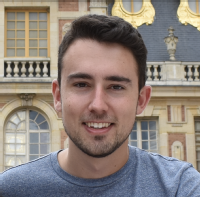James Blake
I am a Research Fellow in Warwick's Centre for Space Domain AwarenessLink opens in a new window. You can view my CV hereLink opens in a new window.
*My webpages are currently being updated, apologies for any confusion.*
Research
My research focuses on the application of astronomical tools and techniques to the problems of space debris and space domain awareness (SDA).
For more information, please see the menu (right).
CSDA
I am the secretary of the Centre for Space Domain Awareness, which brings together a wide range of research groupsLink opens in a new window at the University of Warwick to tackle issues relating to the safety and sustainability of satellite operations in the space domain.
Please feel free to get in touch with any ideas for collaboration. We are also keen to hear from potential speakers for our seminar series.
GNOSIS
I am the secretary for the Global Network On Sustainability In Space (GNOSIS), which promotes, coordinates and develops collaboration across the academic, defence, industrial and political sectors to understand and solve problems relating to the sustainable use of space.
If you're interested in presenting at a GNOSIS event, or would like to contribute a blog post to our series, please feel free to get in touch.
For more information, please visit the GNOSIS websiteLink opens in a new window.
Highlights
- The sticky situation regarding space debrisLink opens in a new window - Warwick Knowledge Centre article, 2020
- AMOS Student AwardLink opens in a new window - Award for Best Student Paper at AMOS, 2019
- The ConversationLink opens in a new window - Article for World Asteroid Day, 2019
- Posters in ParliamentLink opens in a new window - Award for Best Poster at Posters in Parliament, 2018
- Pondering PanspermiaLink opens in a new window - Interview about my research on panspermia, 2018
- Stratford TalkLink opens in a new window - Summary of Stratford upon Avon Astronomical Society talk, 2017
- NewScientist articleLink opens in a new window - News article about our work on the Hot Jupiter HAT-P-7b, 2016
| - James Blake - |
| Research |
| Outreach |
| Publications |

